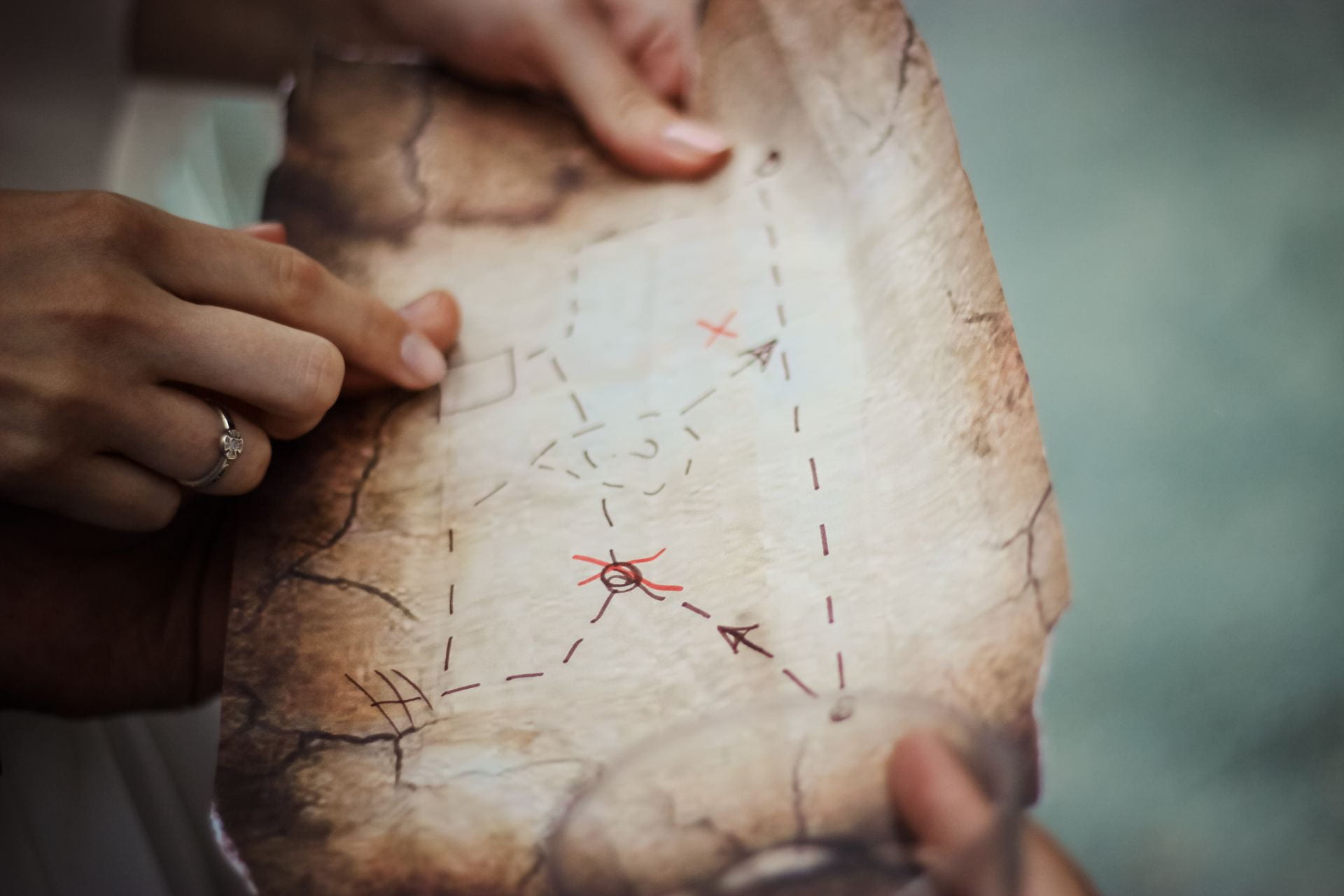Few narratives invite such romantic sentiments as the treasure hunt; the mind stirs with visions of swashbuckling escapades and ancient riddles. In medieval England, treasure was not associated with the adventures of swaggering archaeologists or subterranean labyrinths (well, not quite as much); treasure operated under an entirely different set of principles and motifs. Folklore concerning the acquisition of treasure was popular within the common discourse of 16th and 17th century England. The prominence of treasure-centered legends suggests a commonly held notion that riches were to be unearthed or stumbled upon in every valley, lake, and trail.

Having said that, locating and, in some cases, capturing treasure was no simple task; it would take expertise and a keen mind. So, for any prospective time travelers thinking of journeying to Britain of old, I offer here some of the aspects of medieval treasure hunting that you ought to know before embarking upon your trip.
Firstly, one must brush up on their magic before undertaking an endeavor such as this. Often, it was said that searchers would use magical objects in order to guide them on their path. If you have any magical amulets or artifacts handy, they could be a great boon in this task. While trinkets of a spiritual sort may direct you along your way, be wary of church officials; while a priestly blessing would be a handy enchantment, you are more likely to find yourself stuck in a courtroom than to find any semblance of treasure if you enlist the help of a clergyman. Institutional religion did not look kindly upon such superstition, and it is best practice to steer clear of the teeth of the medieval British legal system, at least where you can.
You will also be wise to venture out upon your search at the most auspicious of times. Certain hours of the day were simply more spiritually pregnant than others. You might go out during the midnight hour, or, if you are not much of a night owl, during noontime. Saints’ days make for promising treasure hunting sessions as well, if you don’t mind working on holidays.

Now that we have touched on the when, we may address perhaps the most vital component of treasure hunting — the where. To this question, answers abound; it may be more fruitful to know where one cannot find treasure. But, to begin nevertheless, one must keep a sharp eye for mistletoe. This curious shrub can be an indicator of treasure nearby, so be watchful for its smooth edged, evergreen leaves and white fruit. It is commonly found attached to broad-leaved trees, so if you come upon an apple tree, you might take a moment to investigate its branches. Ruins are an excellent source of treasure, rich in riches, or so they say. The crumbling remains of a monastery may still be pocketing some underground deposit of assets, evidently forgotten by the monks when they took their leave. If there are no ruins around, no crosses planted by the side of the road, or even not much of anything around at all, do not despair. A blue flame is a common signal for treasure out in the open plains. If you dig where you spot a blue flame, you may be a few shovelfuls of earth away from everlasting fortune.
Still no treasure to be found? If so, then you may be encountering some of the obstacles that often impeded upon the common cross-digger. And here we approach one of the most fascinating components of treasure lore of the time — the operations of the treasure itself.

Treasure of this time does not merely lay about stationarily, slumbering quietly in repose beneath the earth. Instead, treasure could move, rise above or sink below the surface, and ultimately escape the grasp of the aspiring hunter. Some credited this phenomena to the manipulations of devils, but by whomever’s designs, it demanded a clever hunter to ensnare a treasure. In order to lure a treasure, a hunter must know what treasure desires. So, what does treasure like? Its greatest temptation, naturally, is money. Sprinkling some money in an area that you know a treasure to frequent is an expert means of outwitting treasure into revealing itself. If you still have some pocket change left after laying your trap, be sure to hold onto it; throwing coins on a treasure once it has made itself known will prevent its escape. Still the treasure may have one last counter to pull from its chest — it may turn to the art of illusion or shape shifting. It was believed that treasure could transmogrify into a heap of worthless materials in an instant, a natural camouflage to slink from the sights of the hunter in a moment. So, if you come upon a suspicious pile of dirt or chunks of wood, it may warrant further investigation, as you could be well within reach of some rather magical treasure.
Hopefully this beginner’s guide to medieval treasure hunting will leave you well equipped upon any journeys into the past. A hunter’s greatest tool is her mind, after all. Steer clear of the church where you can, just to be safe. And, since magical beings may be guarding the treasure, keep an eye out for any territorial demons who might not take kindly to your designs. Never has the term treasure hunting been so appropriate to the task at hand — having said that, happy hunting.

By Ben Travers
References
Johannes Dillinger, “Magical Treasure,” from Magical Treasure Hunting in Europe and North America, pp. 53-84.
